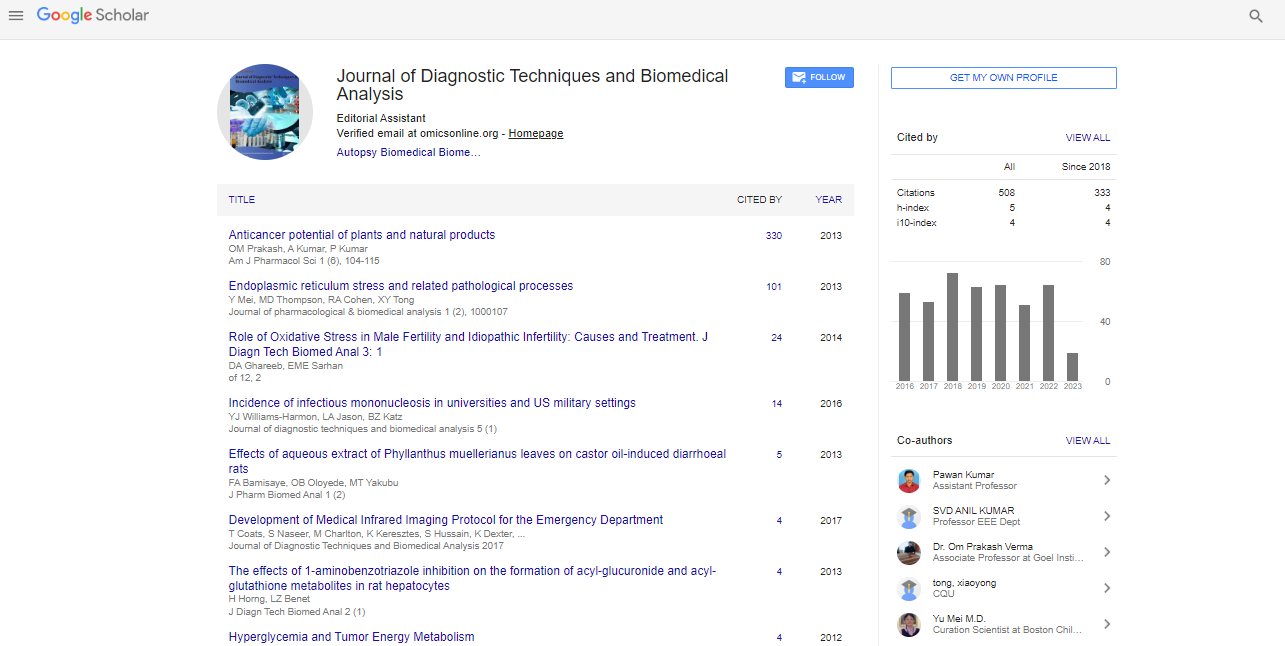Research Article, J Diagn Tech Biomed Anal Vol: 3 Issue: 2
Application Of Color Changes Of Anthocyanins In Red Wine And Red Currant Extract As A Clinical PH Indicator
| Wataru Sakamoto1*, Takashi Kanehira2, Hirohisa Hongou2, Akemi Matsuda3, Masanori Mune4 and Kozo Asano5 | |
| 1Serotec Laboratory, Ebetsu, Hokkaido, Japan | |
| 2Division of Preventive Dentistry, Graduate School of Dental Medicine, Hokkaido University, Sapporo, Hokkaido, Japan | |
| 3JR Sapporo Hospital, Sapporo, Hokkaido, Japan | |
| 4Fujii Hospital, Kishiwada, Osaka, Japan | |
| 5Division of Applied Bioscience, Research Group of Molecular Bioscience, Graduate School of Agriculture, Hokkaido University, Sapporo, Hokkaido, Japan | |
| Corresponding author : Wataru Sakamoto, PhD Serotec Laboratory, Higashinopporo 132, Ebetsu, Hokkaido, 069-0822, Japan Tel: 81-11-383-3431; Fax: 81-11-383-4322 E-mail: w-sakamoto@serotec.co.jp; sakamoto@den.hokudai.ac.jp |
|
| Received: August 14, 2014 Accepted: November 21, 2014 Published: December 27, 2014 | |
| Citation: Sakamoto W, Kanehira T, Hongou H, Matsuda A, Mune M, et al. (2015) Application of Color Changes of Anthocyanins in Red Wine and Red Currant Extract as a Clinical pH Indicator. J Diagnos Tech Biomed Anal 2:2. doi:10.4172/2469-5653.1000111 |
Abstract
This study was performed to develop a novel colorimetric system using anthocyanins as a clinical pH indicator. Anthocyanins prepared from red wine and red currant extract were characterized by HPLC analysis, alcohol content, and pH. The stability of anthocyanins in aqueous solution and the solid phase was compared. Anthocyanin on a cotton swab was hardly affected by storage for 60 days at room temperature, but the anthocyanin strikingly decreased in aqueous solution. Cotton swabs in which anthocyanin was absorbed displayed a variety of color variations in the pH range from 5.5 to 8.0. Interestingly, it was shown that the color changes correlated with the color component of a* (redness), which was quantified using a chromometer. Measurements of pH in nasal secretions and saliva were reproducible for the visual color and color component of a*. These results show that the assay system can be used as a visual indicator for clinical measurement of pH.

